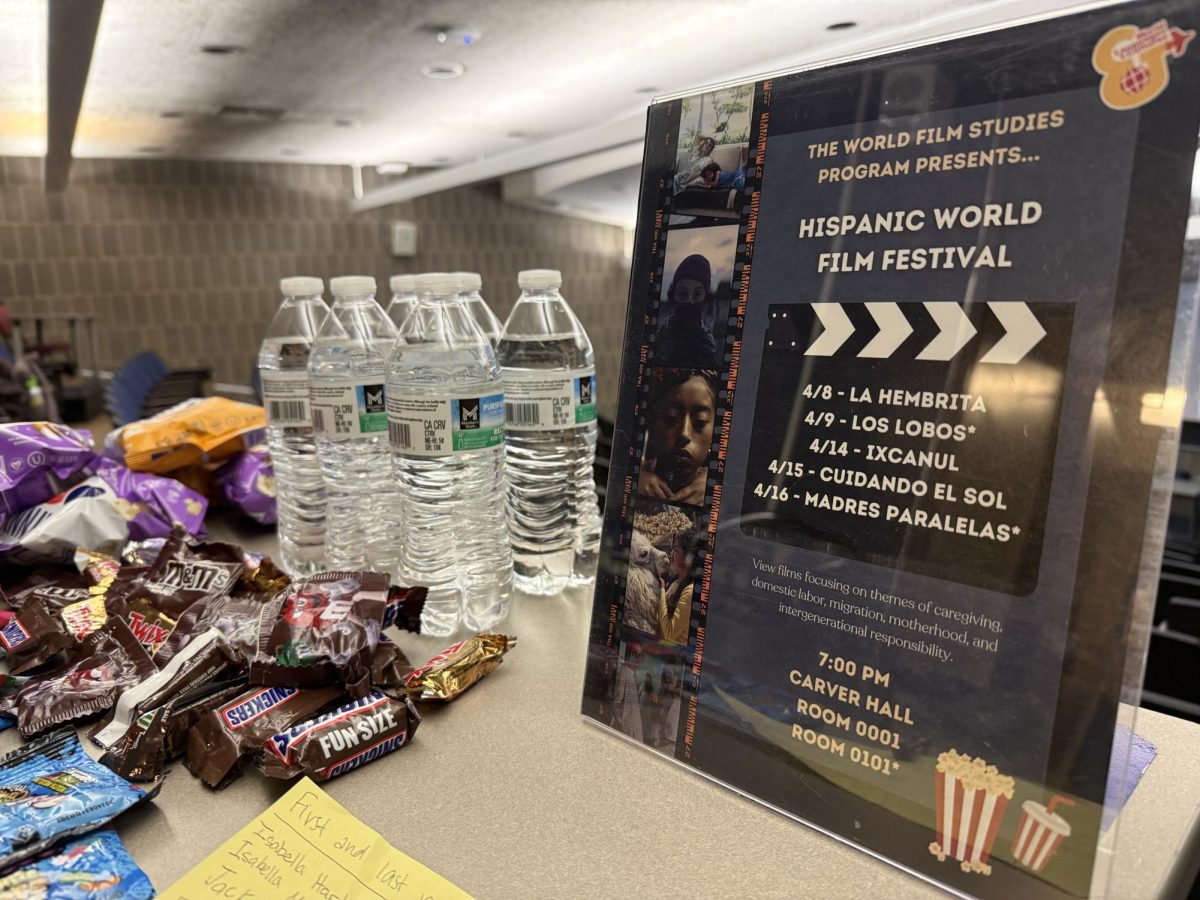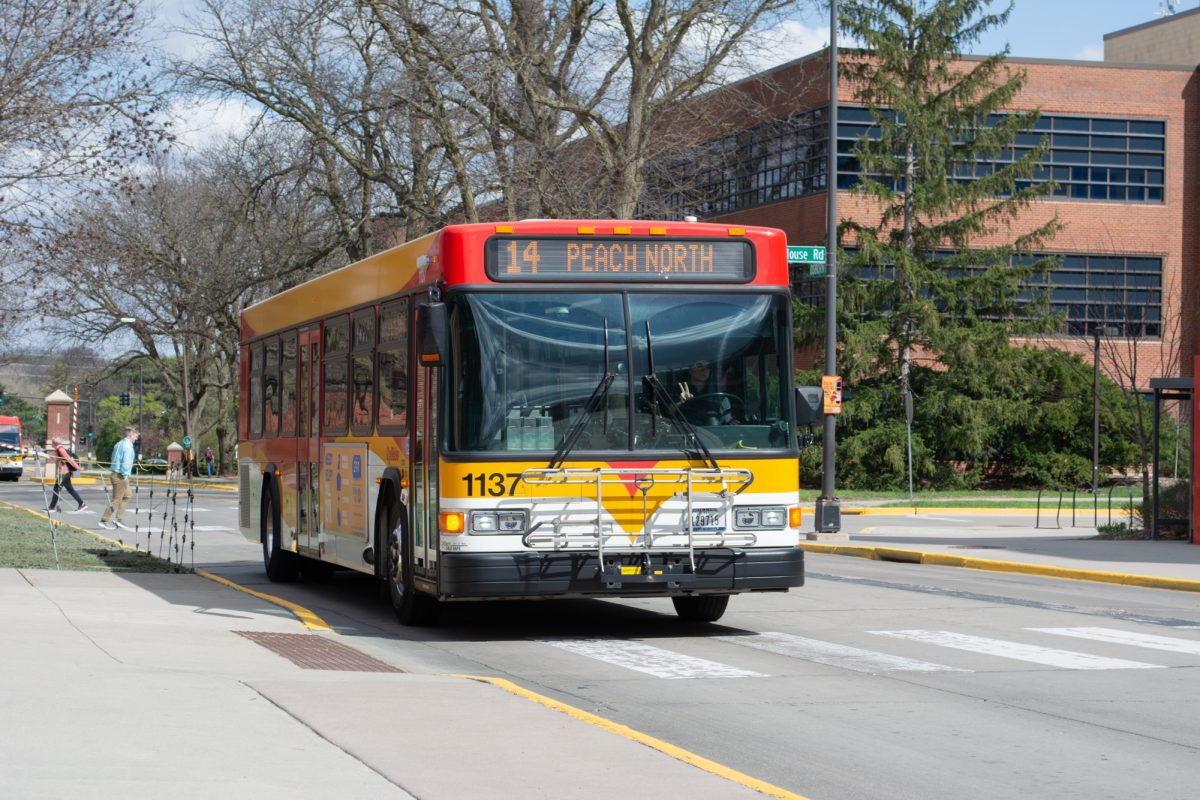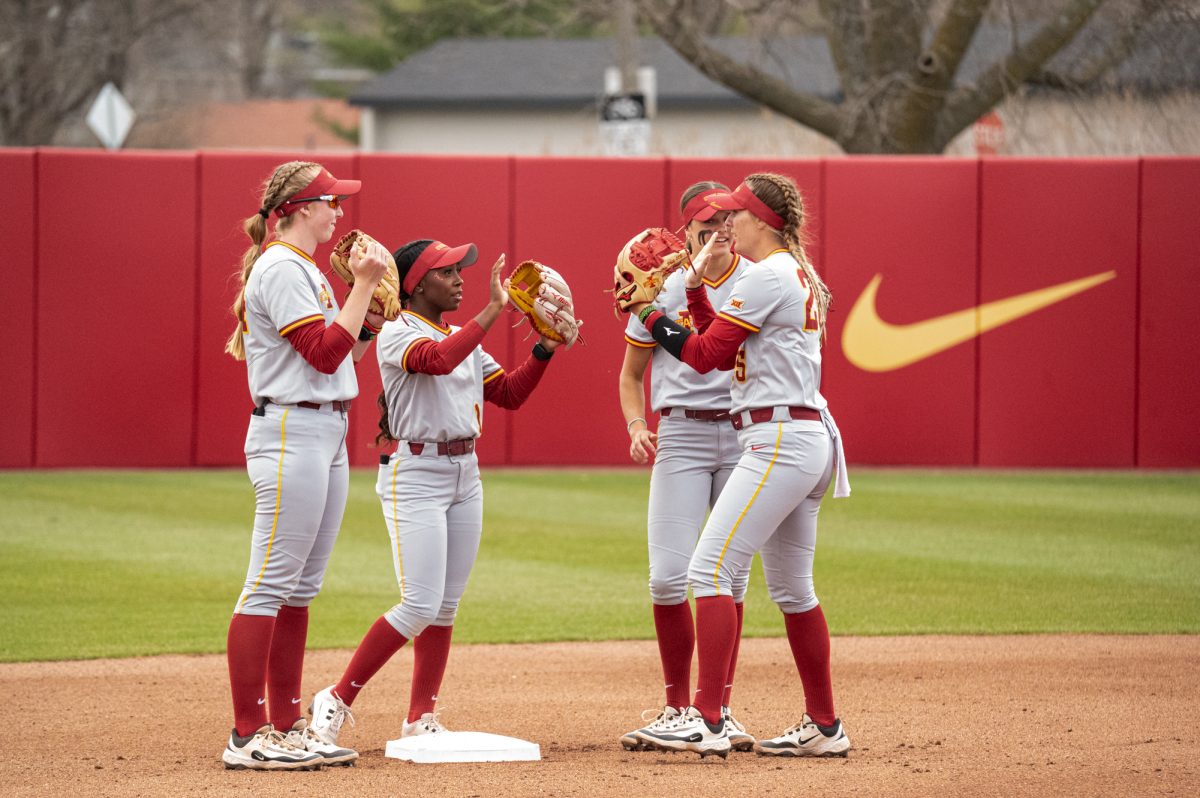Religion and inclusion
April 29, 2016
A Search for Inclusion
All are welcome.
Plastered on brochures, websites and mission statements, these three words can make for a misleading phrase.
It was a year ago when Benjamin Spick, senior in anthropology and religious studies, began researching the religious options for students in Ames as a part of an internship with Lesbian, Gay, Bisexual and Transgender Student Services.
“Something that I’ve found interesting and kind of ironic is that within a lot of Christian denominations that there’s this adage that ‘all are welcome,’” Spick said. “But especially when you get into considering the inclusion of LGBT identities, that ‘all are welcome’ becomes more contested and a little more ironic or hypocritical.”
While many communities of worship may consider themselves inclusive or welcoming to all members, they may lack programing or outreach that LGBT students may be looking for in a place of worship, Spick said.
Spick, who does not identify as either a man or a woman, prefers the use of gender-neutral pronouns such as singular they, them and theirs.
For Spick, finding a welcoming congregation was pivotal when transitioning from high school to college. After being raised Roman Catholic, Spick said that by the end of high school they began to search for a more inclusive place of worship.
With its strict doctrine and traditions, fitting in with Roman Catholicism would have been difficult, even going beyond issues of gender and sexuality, Spick said.
“I started thinking about what kind of places of worship I would be wanting to seek out when I came to Ames,” Spick said. “It was always something that was important to me, having a place to publicly worship. Really, church occupied so much of our time growing up. We were always very invested in church. It was always my outlet of community service.”
After visiting the First Unitarian Church of Des Moines for a friend’s guitar recital, Spick said they remembered picking up brochures and wanting to learn more about the faith. It was while researching that Spick found a similar place of worship in Ames — The Unitarian Universalist Fellowship of Ames.
For Spick, Unitarian Universalism appealed to them because of the ethical principles that the fellowship followed as opposed to strict doctrine. In addition, the faith’s open theology allows its members to practice other religions alongside it, Spick said.
Spick attended their first service at UUFA the Sunday before classes started during their freshman year and has continued to attend since that day.
The fellowship’s minister, Rev. Kent McKusick, is openly gay.
“He’s been a great role model to me,” Spick said. “Being able to see a ‘queer’ man who is religious and not explicitly Christian either was really important for me.”
The church was the first place where I came out publicly, during our young adults group and has continued to be an affirming place, Spick said.
Spick now serves as a lay leader for the fellowship, which includes preparing and facilitating Sunday services. They also work as the education and outreach chair for Iowa State’s LGBTA Alliance.
“I was hesitant at first because I wanted to be cautious and make sure this was the right decision that I was making before investing myself too much in a community,” Spick said. “But that community was really welcoming of me from day one, almost to the point of taking me aback.”
Community Conversation
While students upstairs lift weights and run on the track, tucked in a small corner of State Gym, members of the Iowa State community slowly gather in a conference room to talk about inclusion.
It’s Pride Week and this is one of the many events organized to raise awareness for LGBT issues.
The room is host to tables arranged in a u-shaped formation, all facing a projector screen that takes up a large portion of one of the walls. By the time the discussion is set to begin, only nine members of the ISU community have arrived to participate.
Kelly Leonard, systems analyst for the Dean of Students Office, begins the conversation. He explains that this discussion marks just the beginning of a much larger project called #InclusiveAmes, which was started by members of the LGBTQA+ Faculty and Staff Association.
“We decided that the best way to start the conversation and collecting some information was to start with a hashtag on Twitter,” Leonard said. “There was a need to share the knowledge of inclusive spaces, information or experiences.”
To demonstrate, Leonard pulls up Twitter and searches the hashtag. On the large projector, two small tweets surface. One of them is from Leonard himself.
The task of the day is to talk about inclusion. The discussion is meant to uncover what work still needs to be done in the community and how to best include members of the community in the upcoming conversations as the project grows.
“The conversation happened because in so many of our sub-populations, we talk about where we can find services or businesses that are friendly or specific things that we need,” said Nicci Port, chair of the LGBTQA+ Faculty and Staff Association. “In a lot of places you’ll see a group might have a sheet of paper that says ‘Here are LGBT friendly restaurants in this city’ or guidebooks.”
It is guidebooks just like this that Spick made for the LGBTSS as part of a safe zone curriculum for undergraduate students during their internship.
As members of the group begin to share their personal experiences, the usage of social media to find inclusive spaces and seeing visual cues, like rainbow flags or inclusive art, are topics at the forefront.
“Another feature could be Facebook groups too,” Port said. “There’s an ‘Ames People’ Facebook group and some of the questions they have deal with inclusion like ‘What are the churches that are inclusive?’ They’re using those social media outlets.”
During the conversation, Senior Vice President and Provost Jonathan Wickert drops in and listens to the group discuss as a whole. He does not contribute to the conversation, but listens intently before leaving nearly 20 minutes before the meeting ends.
To get an idea of what an inclusive community feels like, the group discusses measures that other cities are taking to make marginalized communities feel celebrated.
Joel Hochstein, program coordinator in the Dean of Students Office, explains that while larger cities around Ames may have more opportunities and be more inclusive, that still isn’t cutting it.
“You can drive thirty miles to have that community, but I want that type of community in my backyard,” Hochstein said. “If I’m going to have to drive, I might as well live in Des Moines. But I want to live here.”
As the discussion draws to a close, Port explains that the #InclusiveAmes project is just beginning. Now members of the LGBTQA+ FSA will continue working toward drawing more members of the community for a larger discussion, involving members of local government, the Ames Police, churches and business owners.
“I feel like if we can include churches and police, if people who aren’t aware of LGBT issues or are discriminatory, if they see churches and see the police supporting the community, that may get the wheels turning in their heads,” said Katie Davidson, program assistant of Veterinary Medicine Administration.
Questioning Congregations
The last thing Spick expected to find was a gay-straight alliance at a Catholic church.
It was while working on an honors project that they stumbled across a group of people within St. Thomas Aquinas Church trying to support members of the LGBT community.
Spick began interviewing and talking with members of the group, called Belonging. The group started meeting in 2002 and is part of the church’s social justice committee, according to STA’s website.
“It definitely does serve you well to give congregations the benefit of the doubt, even if you think it’s probably not an inclusive space,” Spick said.
Despite the church having a GSA, Spick said they would consider STA only a nominally inclusive church, as many members are openly inclusive, but the same cannot be said for the entire congregation. Spick said they believe it is often difficult for Catholic congregations to be publicly inclusive.
For Jordan Adams, freshman ministry leader at Cornerstone Church, conversations about what the Bible has to say about marriage and LGBT issues are relevant and the topic of many students’ questions.
The Salt Company is a student ministry of Cornerstone Church that meets weekly on Thursday. According to their website, around 1,200 students attend each week. Cornerstone Church is a part of the Southern Baptist Convention.
Although Adams said members of Cornerstone Church rarely host sermons relating to LGBT issues, he said he believes if it is something students are working through that their church’s small groups are an important place for those conversations to happen.
“We even [have] just students who are trying to figure out what they believe, or maybe even what they are going through personally, so we do have those conversations and try to be a source of guidance,” Adams said. “We want to be a place that respects people and the things that they’re working through.”
To share the church’s core beliefs as it relates to gender and the Bible, Cornerstone Church’s website quotes Genesis 1:27. According to their website, their belief is that God created mankind in his image, creating a distinct male and female complement.
Mark Vance, director of the Salt Company, declined to comment.
When looking into inclusive places of worship, Spick said they didn’t reach out to Cornerstone Church.
“As an LGBT person, there are congregations that I know have reputations of not being inclusive from hearing from other people who are LGBT or seeing how members of that congregation treat and speak about LGBT people,” Spick said.
When searching for a place of worship, Spick said it is important to keep in mind what the term inclusive means to each place of worship. Even if members of the LGBT community are welcomed to a church, Spick said they must keep in mind any restrictions that might be imposed, such as being forced to remain celibate.
“To what extent can you be a whole person within that congregation,” Spick said. “I’m defining a whole person as a person who can engage in sexual practices and engage in gender practices consistent with who they understand themselves to be without the fear of being excluded by the community.”
After doing research, Spick said they were surprised to find more inclusive places of worship than they had expected.
In addition to UUFA, Spick said he found places such as the Collegiate United Methodist Church, United Church of Christ and First Christian Church among many others to be inclusive places of worship. Of these places of worship, all three displaced some form of an inclusive message on their websites, including rainbow flags and statements of reconciliation.
When it comes to finding out more about a congregation, Spick said simply asking the minister may be the easiest route.
Because when ‘all are welcome’, sometimes all actually just means some.






